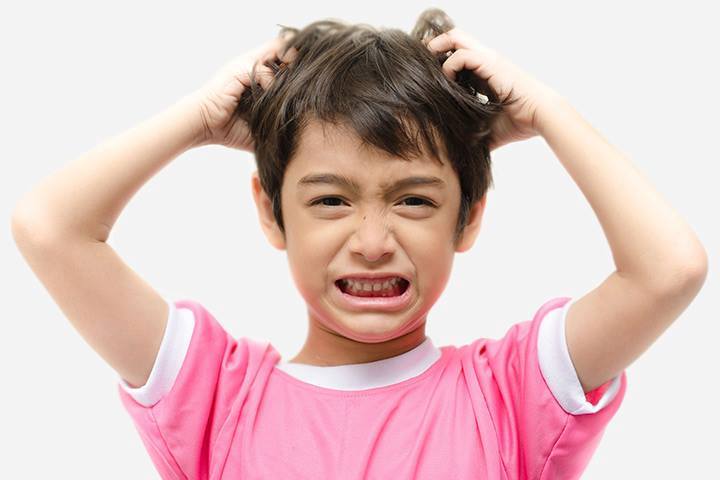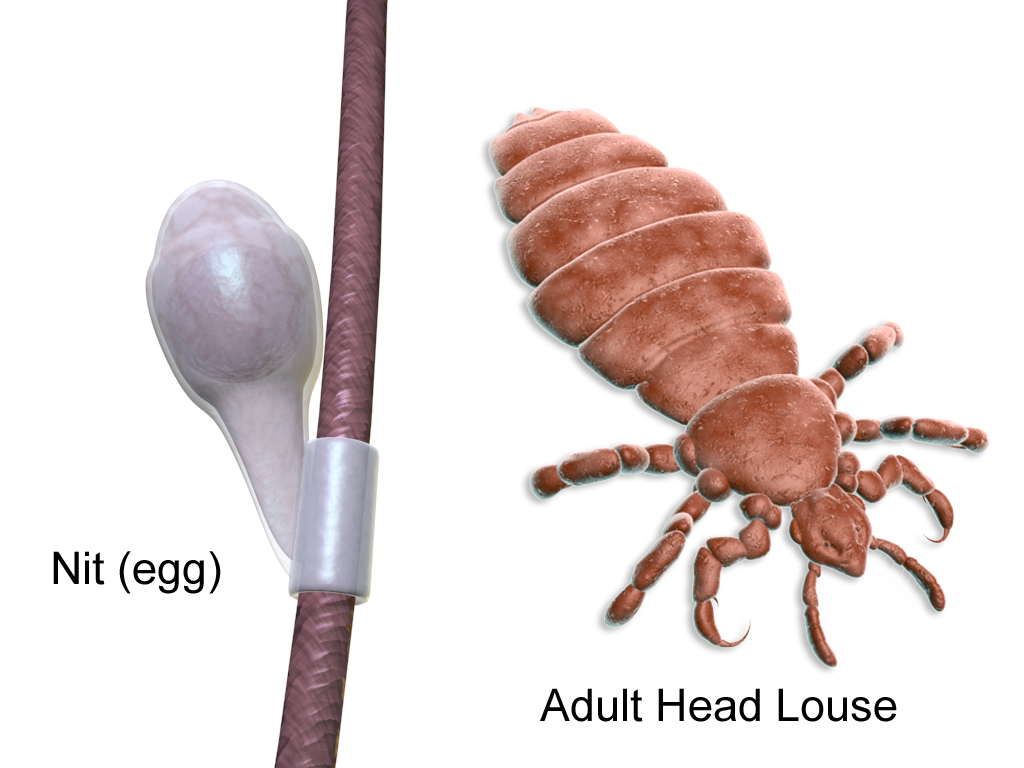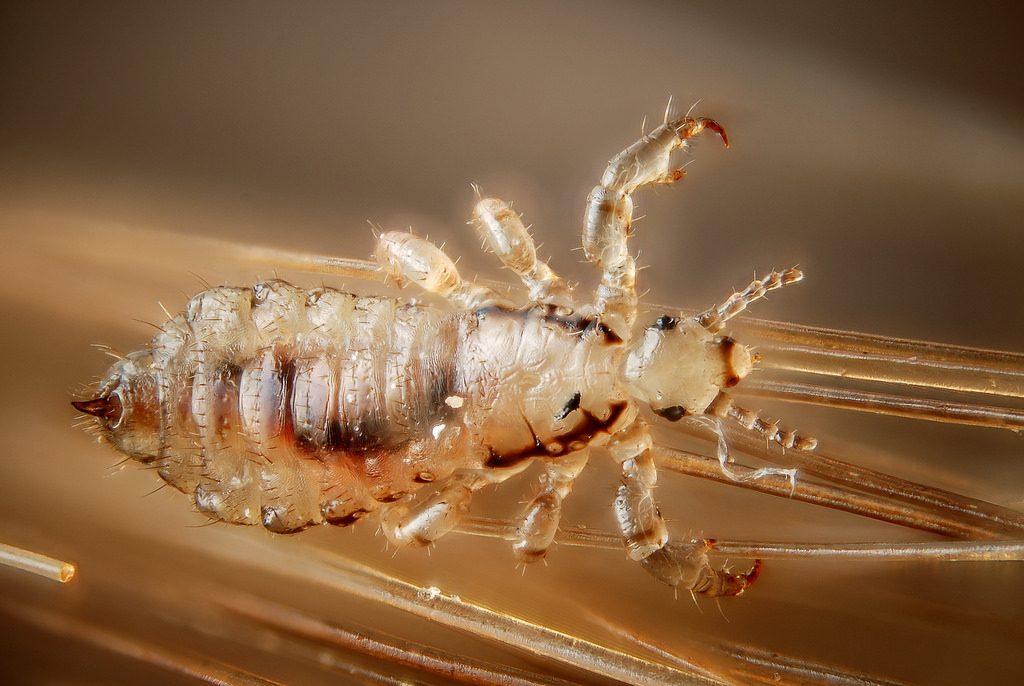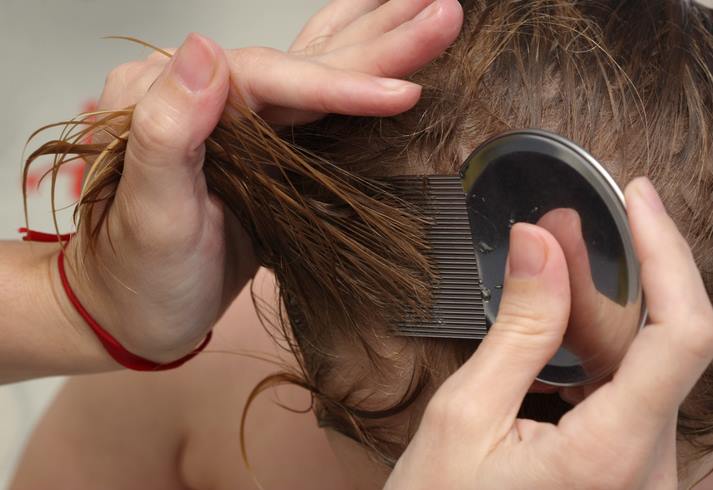Human Head Lice: What You Need To Know
No one ever wants to receive a phone call from school explaining to them their child has head lice, but unfortunately it is all too common for this to happen.

Biology of Head Lice
Human head lice, or louse, are small 1/8″ whitish species with faint dark markings on the sides. Female head lice glue small tan eggs (nits) to the base of hairs, mostly behind the ears and at the nape of the neck. An inseminated female lays one to 10 eggs every 24 hours, usually during darkness or periods of host inactivity. During her lifetime, a female will deposit 80 to 140 eggs!

The eggs of lice are called nits. They are oval, tan, cylindrical, and about 1/32 inch long. The eggs of head lice are usually glued to the base of hairs near the scalp.
Habits
This pest is highly dependent on maintaining contact with its host, feeding several times per day, and cannot survive without a blood meal for more than one or two days at room temperature. Lice may remain on bedding or furniture for a brief period. An individual not previously exposed to lice will initially not experience sensation upon louse feeding, but once sensitized, may react with severe itching and eczema-like skin eruptions. This itching may also interfere with sleep.
How the Female Lays Eggs
The female first applies a bead of gluey substance to the hair and then a few seconds later deposits a single egg. Temperature and relative humidity are critical during the incubation period. At 84-90°F, 70%-90% of the eggs hatch in seven to nine days. The bottom of the louse egg is glued to the hair shaft by an extremely persistent cement that retains the empty egg shell long after the young louse has emerged.

Lice are photophobic and mobile, making them difficult to locate among the hairs. They are relatively uninfluenced by climate because their niche is regulated by the host, with constant temperature and moderately high humidity.
Prevention of Head Lice
Head lice are mainly acquired by direct head-to-head contact with an infested person’s hair, but may be transferred with shared combs, hats and other hair accessories. Children should be encouraged not to share any personal belongings or equipment such as helmets or headphones. Although head lice aren’t solely associated with uncleanliness, washing and changing clothing daily will aid in the prevention of lice.
During the late summer and early fall months (August through November) children should be inspected periodically because the “back-to-school” season seems to be when lice are most commonly transmitted. This will generally result in widespread infestations during the winter months (December through January).
Treatment of Head Lice
There is no one fits all solution to treating head lice. A cohesive approach including preventative measures, inspection, manual louse and nit removal, cleaning the environment, and the careful use of pediculicides (lice killing agents) is the best approach to managing a head lice infestation. According to the University of Florida’s Institute of Food and Agricultural Sciences (UF/IFAS), there is no pediculicide product available that kills 100% of the louse eggs.

Nit removal is key to controlling head lice because 20 to 80 percent of nits survive shampooing with pyrethrin- or permethrin-based products.
When Treating Head Lice
The UF/IFAS also urges taking proper precautions when using any form of lice medication:
- Do not use extra amounts of any lice medication unless instructed to do so by your physician and pharmacist. The drugs used to treat lice are insecticides and can be dangerous if they are misused or overused.
- Do not treat an infested person more than two to three times with the same medication if it does not seem to be working. This may be caused by using the medicine incorrectly or by resistance to the medicine. Always seek the advice of your health care provider if this should happen. He/she may recommend an alternative medication.
- Do not use different head lice drugs at the same time unless instructed to do so by your physician and pharmacist.
- Apply lice medicine, such as pediculicide, according to the instructions contained in the box or printed on the label. If the infested person has very long hair (longer than shoulder length), it may be necessary to use a second bottle.
Cleaning the Environment
Once an infestation is detected through inspection, all clothes should be washed in hot soapy water at roughly 150°F. Pillow cases, sheets, blankets and other bedding material should also be washed and placed in the dryer on the “high heat” cycle for at least 20 minutes to kill the lice and their eggs. Carpets, furniture, car seats, and other such items should be thoroughly vacuumed and the vacuum bag immediately discarded outside of the home. Anything that cannot be vacuumed, such as children’s toys, should be tightly sealed in plastic bags for at least seven to 10 days to kill all stages of lice.
Take a Peek Once a Week
The human head louse infests 10 million to 12 million people each year in the United States. Pediculosis, or “lousiness,” is one of the most well-known conditions in the country. Unfortunately, it is next to impossible to prevent all head lice infestations. Therefore, it is important to be aware and educated on all the necessary steps to prevent the transmission of head lice.
Additional Resources
- Prevent Bed Bugs in Dorm Rooms
- Best Flu Prevention Advice: Wash Your Hands!
- How Do I Know If I Have Lice? – Pest Prescriptions